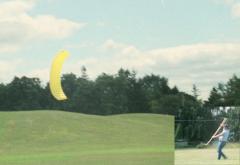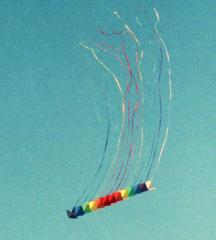-
Posts
630 -
Joined
-
Last visited
Content Type
Profiles
Forums
Gallery
Downloads
KL Shop
Blogs
Articles
Everything posted by --Pete
-
AWright! That's a color combo (in the Kymera) that I like. Somehow, the stock colors just don't grab me.
-
The advantage to putting it back into the prize pool is that we get to do this all over again. With a redraw, it just happens. What's the fun in that? (Other than maybe winning the kites.)
-
More congrats to Robert. Did you know there is actually a Topic for learning your subscriber number? Check it out (Although John will generally respond no matter where you ask.)
-
Well, I'm willing to do my part in getting over 300 "banters" for this prize. 8 3 3
-

Anyone with graphic skills, kite emoticons?
--Pete replied to John Barresi's topic in The Web Site (nuts and bolts)
Ahh. I see. I've always had WinZip on my Windows computers. Back in the very early 1990s I was one of the original beta testers for Nico Mak when he was developing WinZip as one of the very early Windows utilities. It can do a lot that the built-in zip utility does not do. At the time, its compression ability was paramount with low-bandwidth modems. (I remember downloading a file that took 1 1/2 days to finish downloading through a 300 baud modem. I seem to recall that it was something like 8MB. That would download in a fraction of a second these days on a good broadband connection.) Now its organizational (collect a group of files into a single distribution file) capability is more useful. It can also encrypt files in the zipfiles, but not with a particularly strong method. -

Anyone with graphic skills, kite emoticons?
--Pete replied to John Barresi's topic in The Web Site (nuts and bolts)
Opened OK for me. -
One 10 footer was more than enough in some winds. When you have your heels dug into the turf and are plowing two grooves while leaning back with your shoulders about a foot off the ground hoping you won't get flipped or pulled around sideways... Scary, but exhilarating. Then take it to the top of the window and slide it down to the side and crash it. (If you take it straight to the side you WILL get flipped or spun.) Then, when your thighs, forearms and biceps stop quivering as though you had just received an electric shock --- set it up to try again.
-
Rainbow as in the spectrum, or Rainbow in the sense of the small stunt kites of that brand name?
-
Well, you will learn faster if you concentrate on left is counterclockwise and right is clockwise. Left and right as kite directions change depending on the orientation of the kite. Clockwise and counterclockwise remain the same. (This good deed will surely influence the RNG to pick #833.)
-
The old dude abides.
-
One other thing that can help. A block of hardwood with a hole that fits the spar very closely. Then cut through the wood and the spar at the same time. You might pull a few fibers on the inside of the spar, but the outside will be well-supported.
-
Awright; I'm in. I'd sure like to try a stack of Revs someday, and this looks like the way to start.
-
BTW, those are called McMahon clips, and you don't see them much any more. People just use Lark's Head Knots. BTW (again) Nice find. that was a VERY expensive kite in its day. I would guess about the equivalent of $400-$500 in today's buying power.
-
You probably will want wiskers/stand-offs. The Hawaiian Team Kite flies better with them, and it certainly launches easier. I used to fly mine on 200' 300# Kevlar™ lines, but that was probably overkill. I really liked the hard-pulling kites, so I tended to have heavy line-sets. (I actually still have them, but I bet they aren't 300# any more; bare Kevlar is subject to UV degradation over time.) For some reason, no one ever told me that it was possible to fly with lines shorter than 200 feet until Lee Sedgwick happened to mention the idea that 200' was taking up a LOT of room on the flying field. I made my first set of 35 foot lines on the beach. I still like long lines when I have the room and plenty of wind to lift them. One good thing about longer lines especially when learning: it gives you more time to maneuver - the "window" is bigger. (Set-up, and any "walks of shame" will be a lot longer, though.)
-
Congrats, Scott. (As usual, we want pictures.)
-
Rap-a-ta-tap-tap-tap! {rimshot}
-
Whoda thunk it? 8:56 AM and still time for another banter: BANTER BANTER BANTER.
-
Still no picture, but my system for keeping the spar-joints together was to tape a bit of light shock-cord (1/8 inch bungie) from the right spar section to the left spar section, attaching just past the joints. Easy to pull apart for storage, yet pulls the joints together any time the spar straightens out in a wind lull. I did this on both my ultra-light and standard spar sets. (3-piece for the 10' Flexi.) Good to hear that someone is still out there flying Flexis. (It's been a long time for me.) A slightly updated link to the youtube video:
-
From the album: --Pete & Kites
Me, leaning back into a 10' Flexifoil. Flying with a 6' spruce flying bar and 500# braided Kevlar.© Copyright©2012 by Peter W. Meek, Ypsilanti, MI
-
Looks like all that bantering finally paid off. Congrats Nick. As usual, let's see some pictures, preferably video.
-
I also had trouble posting: For removing s friction-fit object, use the inertia method: Drill (or find) a hole just a bit bigger than the stake. It can be a hole in a block of metal or hard wood, or a piece of pipe just a bit bigger on the ID than the stake. Fix the hole (actually the object the hole is in) firmly. Put the block in a vise, set the end of the pipe on a hard surface. Now, slide the stake through the hole briskly. You may need to pad the hole if the knob is fragile or scratchable; use a plastic washer or maybe a leather washer if it is very fragile. Keep "hammering" the knob against the hole-object and the stake will gradually creep out of its socket. Note well, there is a third possibility: the knob may be threaded onto the stake. If so, you had better try unscrewing it FIRST. Remember righty-tighty; lefty-loosey. Either of the two previous methods will go seriously wrong if tried on a threaded connection, although sometimes a bit of heat is needed to free up a threaded connection which has Loc-tite (or similar thread locking goop) in it.
-
Try putting the end of the spike in a vise and using a propane torch to heat the spike fairly close to the knob (maybe an inch or two from the knob). Angle the flame away from the knob to avoid heating by the tip of the flame. Remember that the hottest part of a torch flame is the very tip of the blue cone; other parts of the flame are much cooler including the interior of the cone and the yellow flame outside the cone. (The hand holding the knob will tell you if any part of the flame is washing over the knob - quickly!) Pull and twist on the knob while heating and be prepared to swish the knob in a bucket of cold water as soon as it comes off. You may hear the "sizzle" of the glue just before it weakens if the torch isn't too loud. The object is to denature the glue (epoxy or cyano-acrylate/superglue) before the knob has time to heat up, so you want to apply heat fast and then get the knob off quickly before heat has time to penetrate past the glue into the knob. I watched Jon Trennepohl remove (external, metal) ferrules from arrow shafts (he was heating the ferrule while pulling with needle-nosed pliers) using this technique a long time ago, and it has served me well ever since. If one part is metal, you can probably use this technique for most glue separations. Oh, and don't burn yourself on the spike by trying to remove it from the vise before it has time to cool. (Or use pliers and the cold water.)
-
It would be very hard to find a suitable saw. The rule-of-thumb for saws is three-teeth-in-the-work - and that means three teeth in the near wall and three teeth in the far wall when you are about half way through the cut. Given the extreme thinness of tubular kite spars, I doubt you are going to find a saw (straight or circular cut-off) with enough teeth-per-inch to satisfy that criterium. Abrasive cut-off disk is the way to go. (With a vacuum!) A saw that is nearly fine enough will suck you in, as there can easily be three teeth in the work as you start the cut, when the blade is nearly tangent to the surface of the spar. When you get a bit farther into the cut, it starts dragging fibers out and splintering.
-
I had a surprise wind-drop and took a 10' Flexifoil for a 360 on 200' lines once. Now that took some running.



